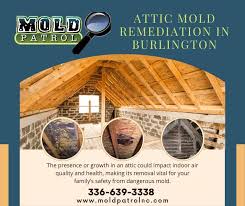Which Weather Mold Levels Are on Highest?
Mold allergies Are you aware of which weather mold levels are at their highest. Mold spores can be seen at their highest levels in the summer months when it is humid. There are numerous ways you can reduce the amount of contact with allergens. For instance, you can keep your windows and doors closed.
Pollen peaks in late March
Allergy sufferers may be delighted to see the return of warmer weather as winter transforms into spring. However, the transition in seasons can also bring the beginning of allergy symptoms. For some, relief won't be felt until after the fall months. The pollen season can change between years, and the timing of peak pollen seasons is contingent on the weather and climate patterns. A damp and cold spring, for example, can delay the start of the season for tree pollen and cause overlap with the grass pollen season.
The highest level of pollen in tree species is usually in March, and they last through April. To provide a complete view of the seasons it is recommended that data collection be carried out during the school hours for at least two weeks, but four weeks is recommended. This way, you'll be able to get the most complete picture of the pollen season. Pollen levels from ragweed typically increase in early autumn and peak around mid-September. The levels slowly decrease following that. However, the levels of pollen could remain high into October.
Tree pollen is the most common allergen. However grass pollen could be an issue. You can mitigate these symptoms by restricting your outdoor activities. Be sure to avoid exposure to pollens by closing your windows during peak season. You should also watch out for insects that bite or sting, especially if you are allergic.
Mold spores are most active during summer months when it is humid.
The growth of mold can be more noticeable in humid areas. If you suffer from asthma and allergies, this season can lead to more serious symptoms. Luckily, there are a couple of easy ways to protect yourself from exposure to the high levels of indoor mold. First, keep your windows closed at late at night. This creates the ideal conditions for mould to thrive.
Mold spores are released into the air by bacteria that live in the decomposing plant matter. Mold spores can also be released into the air by fungi that live in decomposing plant matter. Although many associate mold with the fall season, it can be an indoor allergen in the winter. It thrives in regions of warm, humid weather following heavy rainfall.
Research shows that mold counts in Austin are at their highest during summer, during which the summer heat and rain are at their highest. The Allergy and Athma Association found that the air contained 27,262 spores per cubic centimeter that fall into the 'High' category. These levels are significantly higher than the typical for Austin during this time of year.
The number of pollens affect allergy symptoms
Avoid going outside early in the morning or late in the afternoon as pollen counts increase. This will help avoid allergy symptoms. It is also recommended to avoid outdoor activities such as walking during high levels of pollen. Although pollen counts are highest during the morning and afternoon, they fall towards the end each day.
If you reside in an area that has high humidity and high pollen counts, use pollen masks to protect yourself from exposure to allergens. Avoid raking leaves or hanging clothes outside. If you don't have the mask, consider using an air conditioner to lessen the quantity of pollen within your home.
The number of pollen grains present in the air is used to determine the pollen count. These particles are made from trees and grasses, and weeds. People who are allergic to pollen can be affected by a high number of pollen particles. A low pollen count might affect only allergy sufferers. The local pollen reporting stations decide the pollen count. The quantity of pollen is crucial because it will determine the severity of your allergy symptoms.
Take precautions to minimize your exposure to mold and pollen
If you're sensitive to pollen and mold It is recommended to take measures to minimize exposure. For instance, it is recommended to use a pollen filter when you're outdoors. It is also essential to stay clear of activities such as the raking of leaves or drying your clothes outside. It is also recommended to close your windows whenever you can.
Pollen and mold spores can be a common cause of allergy symptoms, and the symptoms can last for months , or even for a full year. The spores are tiny fungi, which live in plants and soil. Like pollen, they make floating spores that float in the air. The number of mold spores in the air is higher during spring. They're at their highest in the summer, while they are the lowest during winter.
The best way to avoid allergic reactions is to take steps to reduce the risk of exposure to mold and pollen. Reduce the risk of exposure by monitoring the weather, especially when you live in a hot or dry climate. You can also use antihistamines, or wear the mask of pollen when you're inside.
|
Phone +13366393338
|
|
| Address: 4175 Burch Bridge Rd, Burlington, NC 27217, United States |

